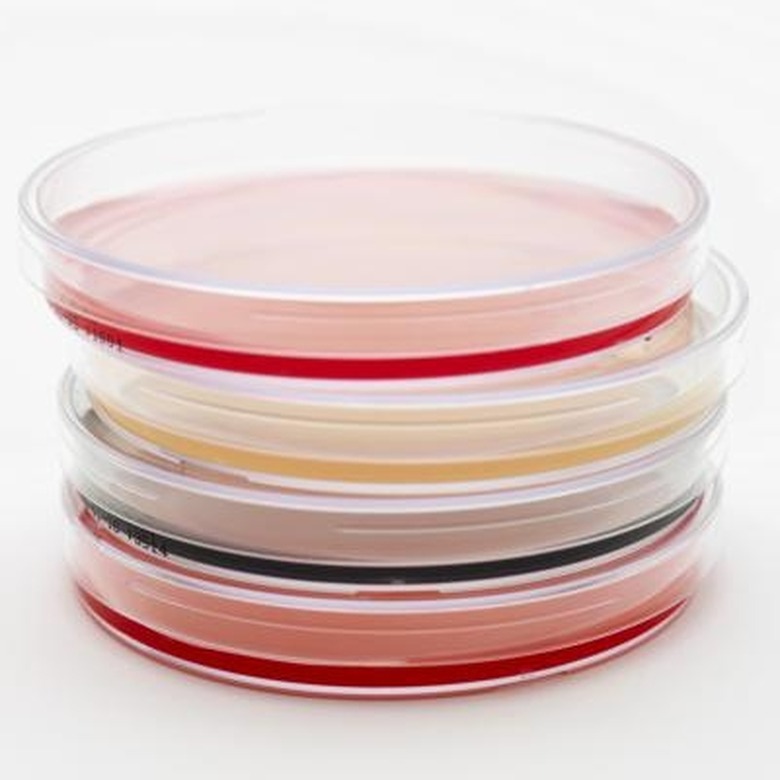How To Make Your Own Agar For Petri Dishes
Scientists and biology students use agar, a substance extracted from red-purple algae, to grow bacteria cultures in petri dishes. Sugar galactose, a substance prevalent in red-purple algae cell walls, is agar's main active ingredient. Agar is ideal for growing bacterial cultures; it becomes firm when cooled to room temperature, and bacteria does not eat away at it. Although you can purchase pre-poured agar petri dishes, preparing your own takes little time and is more cost effective.
Step 1
Dissolve 10 agar tablets for every 500 ml of water. If you prefer to use agar powders, add 6.9 g of agar to 500 ml of water.
Step 2
Heat the agar and water solution in a saucepan or microwave in a microwave-safe container until the solution reaches 185 degrees F, or 85 degrees C. This is the point at which agar completely melts.
Step 3
Open the petri dish lids as little as possible and hold the dish at an angle.
Step 4
Pour enough agar to form a 1/8 inch layer at the bottom of each petri dish.
Step 5
Replace petri dish lids and allow agar to cool to room temperature. At this point the agar will set and your petri dishes are ready to use.
Things Needed
- Powdered agar or agar tablets
- Water
- Measuring cup
- Sterile saucepan or microwave safe container
- Sterile petri dishes
TL;DR (Too Long; Didn't Read)
If you are preparing dishes for later use, store them in the refrigerator, stacked upside down. Bring them to room temperature before using.
References
Cite This Article
MLA
Reeves, Heidi A.. "How To Make Your Own Agar For Petri Dishes" sciencing.com, https://www.sciencing.com/make-own-agar-petri-dishes-5665036/. 24 April 2017.
APA
Reeves, Heidi A.. (2017, April 24). How To Make Your Own Agar For Petri Dishes. sciencing.com. Retrieved from https://www.sciencing.com/make-own-agar-petri-dishes-5665036/
Chicago
Reeves, Heidi A.. How To Make Your Own Agar For Petri Dishes last modified March 24, 2022. https://www.sciencing.com/make-own-agar-petri-dishes-5665036/
